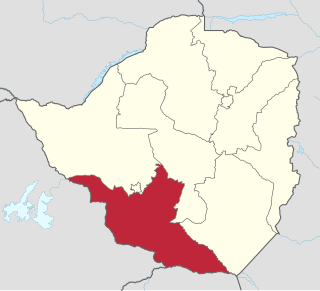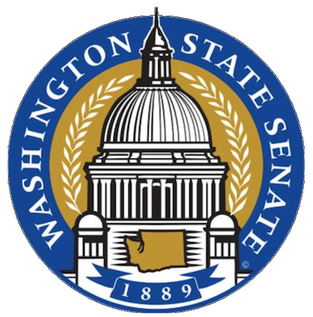A member of parliament (MP) is the representative in parliament of the people who live in their electoral district. Members of parliament typically form parliamentary groups, sometimes called caucuses, with members of the same political party. Many countries with bicameral parliaments, this term refers only to members of the lower house since upper house members often have a different title. The terms congressman and deputy are equivalent terms used in other jurisdictions.

The Senate is the upper house of the Cortes Generales, which along with the Congress of Deputies – the lower chamber – comprises the Parliament of the Kingdom of Spain. The Senate meets in the Palace of the Senate in Madrid. The presiding officer of the Senate is the president of the Senate, who is elected by the members at the first sitting after each national election.

The Parliament of the Republic of South Africa is South Africa's legislature. It is located in Cape Town, the country's legislative capital.

The New Jersey Legislature is the legislative branch of the government of the U.S. state of New Jersey. In its current form, as defined by the New Jersey Constitution of 1947, the Legislature consists of two houses: the General Assembly and the Senate. The Legislature meets in the New Jersey State House, in the state capital of Trenton.

Matabeleland South is a province in southwestern Zimbabwe. With a population of 683,893 as of the 2012 Zimbabwean census. It is the country's least populated province after Matabeleland North.Matabeleland South and Matabeleland North were established in 1974, when the original Matabeleland Province was bifurcated. The province is divided into six districts. Gwanda is the capital, and Beitbridge is the province's largest town. The name "Matabeleland" is derived from Ndebele, the province's largest ethnic group.

The Honorable Senate of the Argentine Nation is the upper house of the National Congress of Argentina.
Canadian Senate divisions refers to two aspects of the Senate of Canada. First, it refers to the division of Canada into four regional Senate divisions of 24 senators each, as set out in section 22 of the Constitution Act, 1867. The four regions are the Western Provinces, Ontario, Quebec and the Maritimes. These regions are intended to serve the Senate's purpose of providing regional representation in the Parliament of Canada, in contrast to the popular representation that the House of Commons is intended to provide. While not within any of the original four Senate divisions, Senate seats are also allocated to Newfoundland and Labrador and the three territories. The four divisions can be expanded when the need arises to have an extra two senators appointed to each regional division.
The Senate was the upper house of the Parliament of South Africa between 1910 and its abolition from 1 January 1981, and between 1994 and 1997.

The Pennsylvania State Senate is the upper house of the Pennsylvania General Assembly, the Pennsylvania state legislature. The State Senate meets in the State Capitol building in Harrisburg. Senators are elected for four-year terms, staggered every two years, such that half of the seats are contested at each election. Even- and odd-numbered district seats are contested in separate election years. The president pro tempore of the Senate becomes the lieutenant governor of Pennsylvania in the event of the sitting lieutenant governor's removal, resignation or death. In this case the president pro tempore and lieutenant governor would be the same person. The Pennsylvania Senate has been meeting since 1791.

The Legislature of Liberia is the bicameral legislature of the government of Liberia. It consists of a Senate – the upper house, and a House of Representatives – the lower house, modeled after the United States Congress. Sessions are held at the Capitol Building in Monrovia. Legislature of Liberia is considered one of the three branches of government based on the Article III of the Constitution of Liberia that stipulates all three branches ought to be equal and coordinated based on the Principle of checks and balances.

The Senate of Zimbabwe is the upper of the two chambers in Zimbabwe's Parliament. It existed from independence in 1980 until 1989, and was re-introduced in November 2005. The other chamber of Parliament is the National Assembly.

The Washington State Senate is the upper house of the Washington State Legislature. The body consists of 49 members, each representing a district with a population of nearly 160,000. The State Senate meets at the Legislative Building in Olympia.

The House of Assembly was the lower house of the Parliament of South Africa from 1910 to 1981, the sole parliamentary chamber between 1981 and 1984, and latterly the white representative house of the Tricameral Parliament from 1984 to 1994, when it was replaced by the current National Assembly. Throughout its history, it was exclusively constituted of white members who were elected to office predominantly by white citizens, though until 1960 and 1970, respectively, some Black Africans and Coloureds in the Cape Province voted under a restricted form of suffrage.

The United States Senate is the upper chamber of the United States Congress. The Senate and the United States House of Representatives comprise the federal bicameral legislature of the United States. Together, the Senate and the House have the authority under Article One of the U.S. Constitution to pass or defeat federal legislation. The Senate has exclusive power to confirm U.S. presidential appointments to high offices, and approve or reject treaties, and try cases of impeachment brought by the House. The Senate and the House provide a check and balance on the powers of the executive and judicial branches of government.

The Constitution of 1961 was the fundamental law of South Africa for two decades. Under the terms of the constitution South Africa left the Commonwealth and became a republic.

The Coloured vote constitutional crisis, also known as the Coloured vote case, was a constitutional crisis that occurred in the Union of South Africa during the 1950s as the result of an attempt by the Nationalist government to remove coloured voters in the Union's Cape Province from the common voters' rolls. It developed into a dispute between the judiciary and the other branches of government over the power of Parliament to amend an entrenched clause in the South Africa Act and the power of the Appellate Division to overturn the amendment as unconstitutional. The crisis ended when the government enlarged the Senate and altered its method of election, allowing the amendment to be successfully enacted.

The 1955 election for the sixth Senate of South Africa occurred because of the wish of National Party Prime Minister Johannes Strijdom to amend one of the entrenched clauses in the Constitution, to separate Coloured voters from whites. However, since his party did not have the constitutionally required two-thirds majority in a joint session of both houses of Parliament, it was decided to alter the composition and electoral system for the Senate, to enable the Separate Representation of Voters Act 1951 to be validated. Consequently, Strijdom had the Senate Act 1955 passed to amend the constitution.

The election for the seventh Senate of South Africa took place on October 26, 1960, with the appointment of nominated Senators by the Governor-General taking place on November 16, 1960.

The election for the eighth Senate of South Africa took place on November 26, 1965, the first election to that body to be held under the 1961 republican constitution and the first in which a representative of the coloured community was not elected. The result was a victory for the ruling National Party, winning 30 out of the 43 elected seats and 40 out of the total 53 seats.

The election for the ninth Senate of South Africa took place on November 16, 1970. The result was a victory for the ruling National Party, winning 31 out of the 44 elected seats and 41 out of the total 54 seats.



















